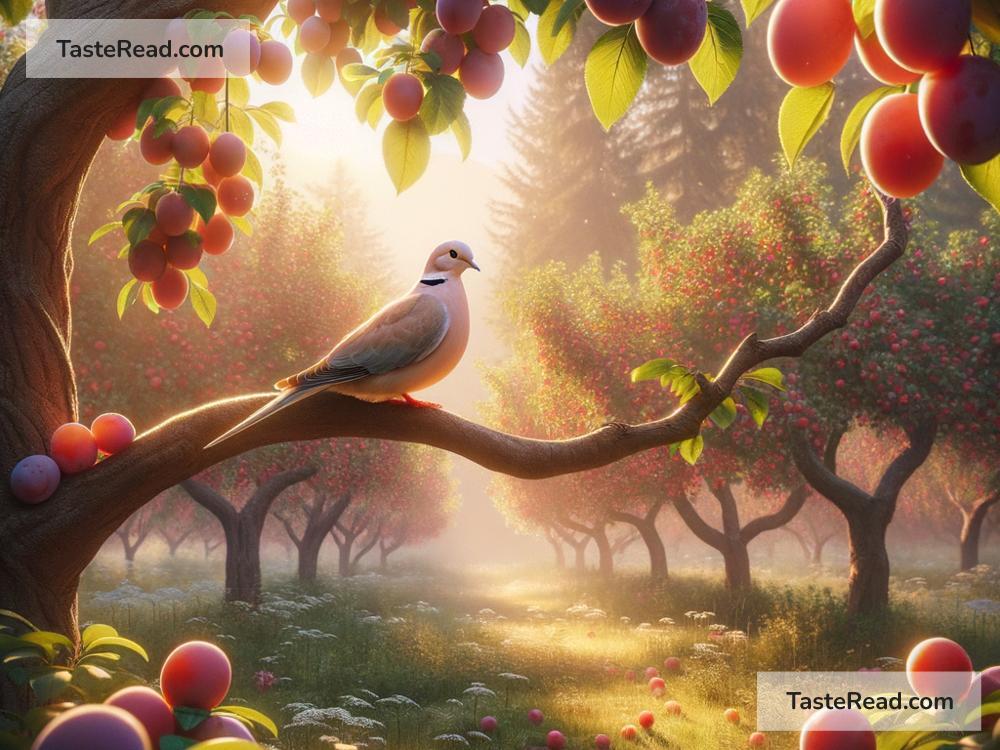Plums and Peace: A Mythical Connection That Sweetens the Soul
Food and folklore often go hand in hand. Across cultures and centuries, people have assigned symbolic meanings to plants, fruits, and other foods, making them more than just a means of sustenance. One such fruit with a fascinating mythological connection is the humble plum. Beyond its juicy sweetness, plums have been linked with the concept of peace in several cultures, thanks to ancient stories and their association with harmony, renewal, and hope. Let’s dive into the simple yet intriguing tale of how plums became symbols of peace in mythology and tradition.
The Plum: A Fruit of Beauty and Balance
Plums are well-known for their vibrant colors, ranging from deep purple to golden yellow. Their soft texture and sweet-tart flavor make them a delight to eat, but their significance goes beyond their physical traits. Plums have appeared in poetry, art, and religious stories over many centuries, often symbolizing beauty, serenity, and inner balance.
In Asian cultures, especially in China, Japan, and Korea, plum trees have historically been admired for their ability to bloom in early spring, even when the weather is cold. This resilience is seen as a sign of renewal and hope—in other words, a peaceful endurance even in challenging times. The plum blossom, in particular, has inspired countless works of art, acting as a symbol of quiet strength and harmony.
Plum Blossoms in Chinese Tradition: Emblems of Peace
Perhaps the most well-known connection between plums and peace comes from Chinese tradition. In China, plum blossoms—which bloom stunningly on bare branches during late winter months—have been seen as a metaphor for overcoming adversity. As the blossoms emerge, they seem to remind people that even after the coldest, harshest winters, renewal and beauty will follow.
Ancient Chinese philosophers and poets often associated plum blossoms with gentleness and inner strength. These qualities are closely tied to the concept of peace—not just peace between people, but personal peace of mind. In this way, plums became symbolic of a calm, contented spirit, unshaken by outer challenges.
Japanese Beliefs: Plums as Protectors of Peace and Prosperity
In Japan, plums also hold special importance, not only for their blossoms but for the actual fruit. The Japanese have long considered plums as symbols of protection, health, and harmony. This belief goes back to folklore stories where plum trees were said to ward off evil spirits and bring good fortune to households.
Plum blossoms, called “ume” in Japanese, also represent renewal and hope—concepts that align closely with peace. They often appear in artwork alongside other peaceful symbols like cranes and turtles. In traditional tea ceremonies, plum designs are sometimes used to foster a sense of tranquility and balance among participants.
Korean Legends: Plums and Their Wisdom
Korean traditions add another layer to the mythical connection between plums and peace. In Korean culture, plum trees are symbols of wisdom and elegance. Their blossoms are seen as representations of purity and perseverance. Folktales and poems often describe plum trees as noble guardians of peace, standing tall against the harshness of winter.
This idea of the plum tree as a figure of dignity aligns with deeper cultural values. Harmony, balance, and the pursuit of wisdom are important aspects of societal peace, and the plum remains a timeless reminder of these ideals.
Global Symbols ofTogetherness and Peace
While the plum-tree roots of peace are most prominent in East Asia, the connection between plums and harmony can be found in other parts of the world, too. Plum trees have been widely grown in Europe, the Middle East, and North America, and the sweet fruit often appears in stories as a symbol of friendship and generosity.
For example, in some traditional European tales, plum trees are seen as a gift from nature that encourages sharing. A basket of freshly picked plums is often depicted as a token of goodwill between neighbors or as a way to mend relationships. The idea of plums fostering community and bringing people together naturally ties them to themes of peace.
A Modern Take on the Plum’s Peaceful Legacy
Even in today’s hurried world, where ancient myths sometimes feel distant, the symbolic power of plums as emblems of peace persists. Plum blossom festivals are celebrated annually in countries like China and Japan, drawing visitors from all over the world to admire their beauty. These festivals are a reminder not just of the fruits’ resilience, but also of their ability to inspire feelings of hope and calm.
In daily life, plums can encourage us to slow down and savor simple pleasures that can lead to peace of mind. Whether you enjoy a handful of fresh plums from the farmer’s market, sip on tea infused with plum flavors, or admire plum blossoms in a garden, the fruit reminds us of nature’s quiet wisdom.
Conclusion: Sweet Fruit, Sweeter Meaning
The mythical connection between plums and peace is both beautiful and inspiring. From plum blossoms that endure winter’s chill to the fruit itself as a symbol of generosity, plums remind us of the importance of kindness, harmony, and hope. Though they may seem small and simple, plums carry a powerful message: even in the hardest of times, peace can blossom—if we nurture it just like the plum tree nurtures its flowers and fruit.
So next time you bite into a juicy plum, take a moment to reflect on its symbolic sweetness. Let its gentle flavor remind you of the possibility of peace, both within yourself and in the world around you. In the end, it’s the little things—like a plum—that make life sweeter and more harmonious than we ever imagined.


